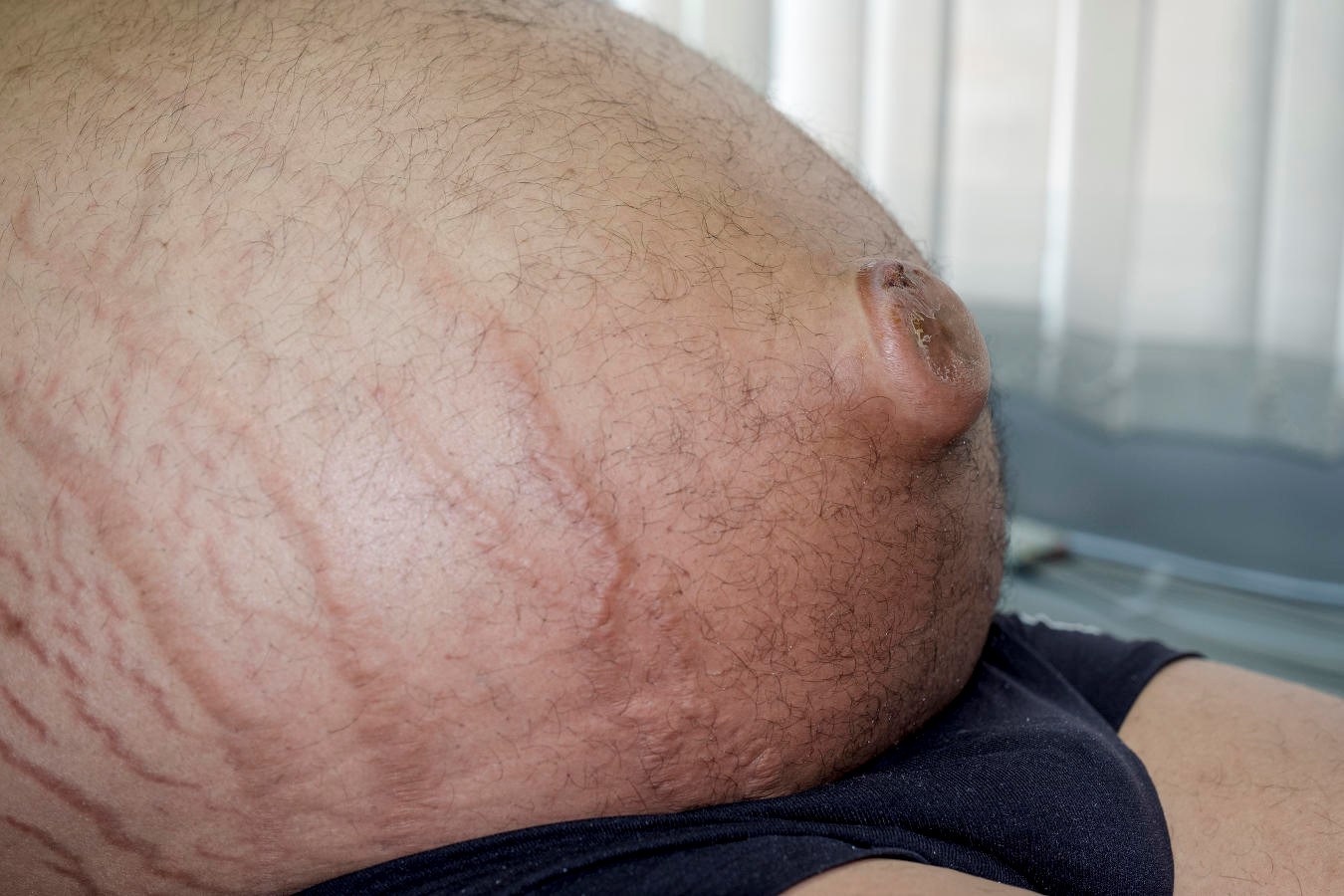
Ascites: symptoms, causes and treatment of fluid collection in the abdominal cavity
Ascites is the collection of fluid in the abdominal cavity. Under normal conditions, the presence of fluid in small amounts (less than 30 ml) does not create problems, but the accumulation of larger amounts is an indicator of different ongoing pathologies and can cause serious health risks
Diseases related to ascites are liver disease, viral hepatitis and alcoholic hepatopathy, followed by cirrhosis of the liver and portal hypertension, heart failure, heart attack, Budd-Chiari syndrome, tuberculosis, pancreatitis, peritoneal carcinoma.
The most serious complications include the possibility of infection (spontaneous bacterial peritonitis or SBP) and the dreaded hepatorenal syndrome, in which fluid pressure on the liver and kidneys severely impairs their function.
What is ascites?
The presence of fluid in the abdominal cavity is a normal occurrence, which means that there is no friction between the internal organs and between the organs and the abdominal wall.
When the amount of this serous fluid increases excessively, we speak of ascites, a sign of the presence of a pathological process.
This condition occurs in the majority of cases (up to 80%) in patients with liver disease, especially cirrhosis.
In the case of cirrhosis, in fact, the strong exchange between the liver and the portal vein (the vein that ‘carries’ venous blood to the liver) causes fluid to spill into the peritoneal cavity causing ascites.
Ascites can be classified into grades: grade I, mild, is only revealed by ultrasound; grade II and grade III, detected by the doctor through a medical examination, are characterised by evident swelling of the abdomen.
What are the causes of ascites?
The most frequent cause of ascites is cirrhosis of the liver.
When the liver and bile ducts are subject to scarring (fibrosis), the altered fluid exchange with the portal vein causes serum to be poured into the abdominal cavity.
Ascites also appears in patients with tumours of the abdominal organs, with tuberculosis, pancreatitis and with heart failure.
What are the symptoms of ascites?
The symptoms of ascites vary depending on the cause. Generally, in the mild form it gives no symptoms and is not visible.
In the more severe form, symptoms may include:
- abdominal pain
- abdominal swelling
- intense tiredness
- weight loss
- loss of appetite
- shortness of breath (dyspnoea), due to mechanical interference with the movements of the diaphragm and lungs.
In conjunction with cirrhosis, oesophageal varices occur, with risk of rupture and bleeding.
Spontaneous bacterial peritonitis is a bacterial infection that originates from accumulated fluid in the abdomen.
It is the most frequent complication of ascites and can give symptoms such as:
- fever
- abdominal pain
- nausea and vomiting
How to prevent ascites?
There are no measures to prevent ascites.
As a general rule, it is necessary to follow a healthy lifestyle, with a balanced diet rich in fruit, vegetables and wholegrains, reduce or avoid alcohol consumption, and take moderate and regular exercise.
Patients diagnosed with ascites should reduce salt in food, avoid alcohol, according to the instructions of the treating physician.
The diagnosis of ascites can be obtained by a medical examination in its advanced stages
The doctor identifies the typical signs of ascites through visual examination of the abdomen and a few simple manoeuvres.
To diagnose the cause or to rule out other conditions, the doctor may request the following tests:
- Blood tests, with blood count, electrolytes (natriemia, potassiemia, chloremia), kidney function tests (creatininemia, azotemia), transaminases (AST and ALT), blood glucose;
- abdominal ultrasound, to search for mild ascites, estimation of the amount of fluid and other conditions such as Budd-Chiari syndrome;
Following paracentesis, examination of the aspirated fluid for bacterial infections or for albumin and protein assay, for the search of possible tumour cells.
Treatments
Treatment of ascites involves certain dietary measures, such as reducing salt (sodium) in food to prevent fluid retention.
The main drugs are diuretics, to expel excess fluid.
In the event that ascites does not improve with the use of diuretics, we intervene with fluid aspiration. The procedure is called paracentesis and is performed on an outpatient basis.
In the case of spontaneous bacterial peritonitis, the infection is treated with antibiotics.
Transjugular intrahepatic portosystemic shunt (TIPS) is used to treat portal hypertension.
Read Also:
Emergency Live Even More…Live: Download The New Free App Of Your Newspaper For IOS And Android
Accumulation Of Fluid In The Peritoneal Cavity: Possible Causes And Symptoms Of Ascites
What Is Empyema? How Do You Deal With A Pleural Effusion?
Ascites: What It Is And What Diseases It Is A Symptom Of
Pain Management In Blunt Thoracic Trauma
Acute Hyperinflammatory Shock Found In British Children. New Covid-19 Pediatric Illness Symptoms?


